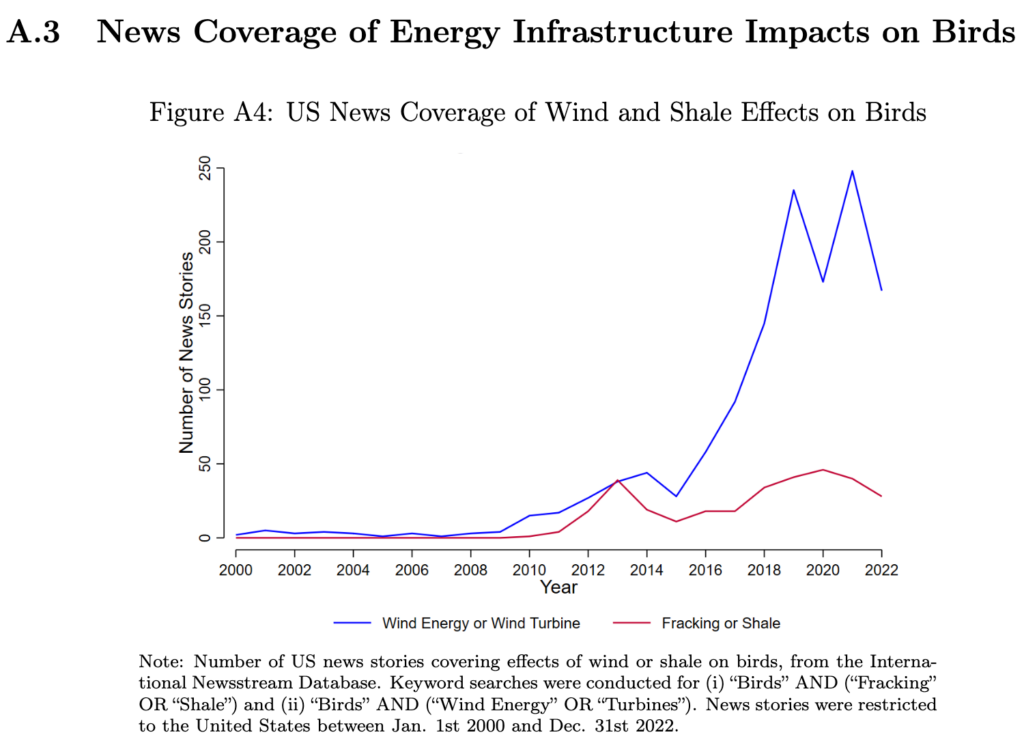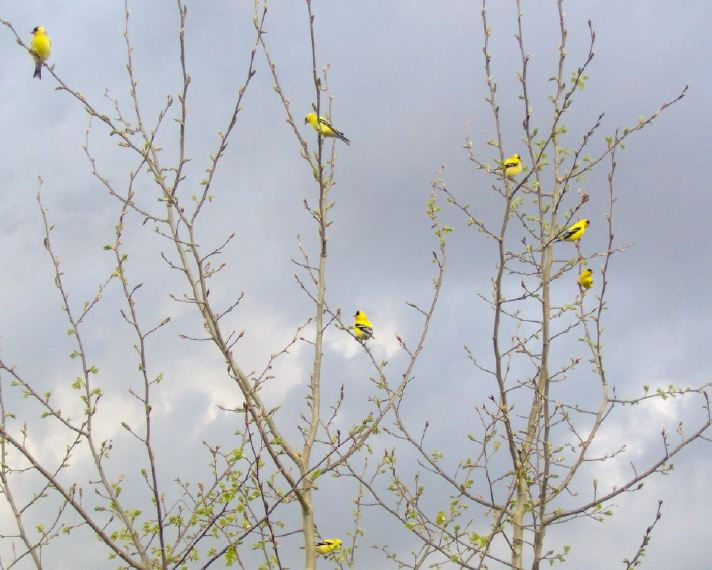Quantifying the Effects of Energy Infrastructure on Bird Populations and Biodiversity by Erik Katovich, Dec 28, 2024, Environ. Sci. Technol. 2024, 58, 1, 323–332
https://doi.org/10.1021/acs.est.3c03899
Copyright © 2023 American Chemical Society
Abstract

Shale oil and gas production and wind energy generation both expanded rapidly across the United States between 2000 and 2020, raising concerns over impacts on wildlife. I combine longitudinal microdata from the National Audubon Society’s Christmas Bird Count with geolocated registries of all wind turbines and shale wells constructed in the contiguous U.S. during this period to estimate the causal effects of these contrasting types of energy infrastructure on bird populations and biodiversity, which are key bellwethers of ecosystem health. Results show that the onset of shale oil and gas production reduces subsequent bird population counts by 15%, even after adjusting for location and year fixed effects, weather, counting effort, and land-use changes. Wind turbines do not have any measurable impact on bird counts. Negative effects of shale are larger when wells are drilled within important bird habitats.
The Supporting Information is available free of charge at https://pubs.acs.org/doi/10.1021/acs.est.3c03899.
Supplementary figures, tables, and robustness exercises that are referenced throughout the manuscript (PDF)
![]() Graph A.3 is my favourite of the supplemental information in the study. Was media lying to turn the public against wind energy, while down reporting frac harms to birds to make us accept the deadly new invasive arm of the oil and gas industry?
Graph A.3 is my favourite of the supplemental information in the study. Was media lying to turn the public against wind energy, while down reporting frac harms to birds to make us accept the deadly new invasive arm of the oil and gas industry?![]()

***
R Newman@RNewmanND Feb 27, 2024:
everybody worries about birds and bats being whacked. Yes, it is bad, but the visible body count is miniscule compared to the impacts of burning fossil fuels and resulting climate change. To say nothing of deaths caused by domestic cats.

Refer also to:
![]() How do trees clean their leaves from frac pollution and wildfire smoke when it doesn’t rain?
How do trees clean their leaves from frac pollution and wildfire smoke when it doesn’t rain?![]()
2023: Frac noise hurts; frac noise harms health
2022: Sandra Steingraber: Happy 60th to Silent Spring. What would Rachel Carson say about frac’ing?
2021: Study: Total VOC emissions from natural gas compressors related to higher human mortality rates.
2021: New study: Songbirds’ reproductive success reduced by natural gas compressor noise.
2013: My past kitchen window view:

![]() American Gold Finches in trembling aspen that I planted, view from my kitchen window at Rosebud.
American Gold Finches in trembling aspen that I planted, view from my kitchen window at Rosebud.
It’s no longer my view. Nearly all trees I planted on my land have died. Aspen (and humans) do not tolerate extreme heat, which has been steadily increasing at Rosebud.
And most of the song birds that used to make my land home, no longer do. Pre-frac’ing, 50 to 60 gold finch pairs nested at my place, every year. I love their feisty antics and happy song. Not anymore. How much has frac pollution, notably compressor noise (which invades my land 24/7, abusing my sternum, ears and soul) and wildfire smoke contributed to diminished song bird numbers at my place and killed the trees?
It was heart-ripping for me to observe bird populations at Rosebud diminish more and more each year after Encana/Ovintiv’s frac invasion began in 2001, then, ripped more when I lost my wonderful water supply to the company’s callous greed and law violations (ignored by regulators).
The harm I find most difficult to cope with is the blind love, worship and protection most prairie people have for the industry that is destroying life on earth.![]()
